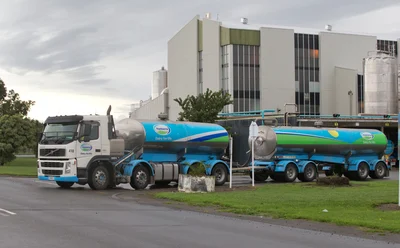Raw milk is just a cost

Opinion: Craig Hickman
Twice in a fortnight Fonterra reduced their farmgate milk price, the price I get paid for each kilo of milk solids I produce for the Co-operative.
Like night follows day, each of the announcements were followed by calls from people with no clear understanding of how the industry works for Fonterra to do things differently.
We are all obviously entitled to our opinions, but the chances Twitter User BigUns47986 has stumbled across an idea Fonterra has missed in the past 20 years seems very unlikely to me.
The first point those who earnestly opine fail to grasp is that, for milk processors, raw milk is a cost.
Raw milk is an ingredient, and when the price is high it’s good for farmers and bad for processors.
Conversely, when the price of raw milk is low it’s good for processors and bad for farmers.
When the cost of your main ingredient plummets, margins increase and profits rise.
I expect every milk processor in the country to become more profitable this season on the back of paying farmers less.
But why, I can hear BigUns47986 ask, are processors paying farmers less?
Surely they should add value and concentrate on niche products and pay farmers more?
The answer to that is simple, the price Fonterra gets for cheese, cream cheese, mozzarella or any other high margin value added product has absolutely no bearing on what farmers get paid for raw milk.
Every fortnight there is a global dairy trade auction (GDT) at which buyers from all over the world bid to secure various dairy products on contracts of varying length. Of all the products sold, only five are used to calculate the milk price; whole milk powder, skim milk powder, butter, buttermilk powder and anhydrous milk fat. That’s it.
Fonterra are completely transparent with how they calculate the milk price and the process is set down in law and overseen by the Commerce Commission.
The cooperative calculates how much money they would have received if all the milk the collected was sold as only those five products, then they deduct the costs involved in making and marketing those five products as efficiently as possible. The remaining figure is the Farmgate Milk Price paid to farmers.
The final refrain I hear from online experts is to reduce our reliance on China. Easier said than done when our allies either won’t give us a free trade agreement (looking at you, USA) or sign a trade agreement and then manipulate their quota system so as to effectively lock us out of the market (thanks, Canada).
While the volume of product China buys is important, what’s more important is that they’re consistently the top bidder.
We don’t need to lessen our reliance on China, we just need other buyers to value our product the same way China does and be willing to pay top dollar for it.
But just like night follows day, nest time there is a change to the Farmgate Milk Price, the keyboard warriors with no skin in the game, no understanding of the complex world of manufacturing , global supply chains and free trade agreements, will be out in force telling us how it should be done differently.
by Craig Hickman
